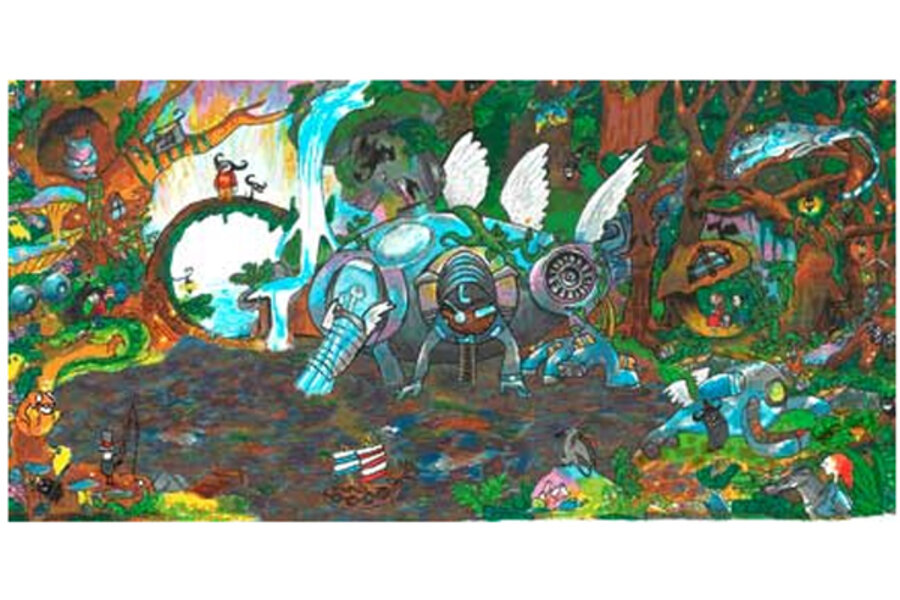Meet the 11 year old who designed today's Doodle 4 Google
Loading...
"You're going to California to Google headquarters."
Those are the words thousands of young artists each year hope to hear as they compete to have their designs displayed on the largest refrigerator door in the world: the Google homepage.
This year, 11-year old Audrey Zhang from New York got to go to California. She is the winner of the seventh-annual Doodle 4 Google competition. Ms. Zhang, who was a finalist for the competition the past two years, beat out more than 100,000 other entries with her design titled "Back to Mother Nature." It depicts a "transformative water purifier," a submarine-like contraption that sits in a swamp with fantastical creatures — dragons, blue mushrooms, a whale wearing a top hat. The contraption pumps in dirty water and turns it into clean water, turning the swamp into a happier, healthier place.
Audrey says she came up with the design upon learning that "not everyone has clean water."
Of the more than 100,000 submissions that were received, there were 250 state finalists, 50 state winners, and four other winners from different age groups, ranging from grades K-3 to grades 10-12. While the 50 state winners were flown out to Google's headquarters in Mountain View, Calif., only Audrey was given the opportunity to stay an extra day to work with a team of Google artists to animate her design, the first time a winning doodle entry has been brought to life in this way.
As described by Ryan Germick, the leader of the Team Google Doodle artists, in an interview with The Washington Post, Audrey's design was "so lush and so rich and so full and so complete. Every leaf seemed to have life on it."
The theme for this year's competition was "an invention that would make the world a better place." As such, other age-group winning doodles include the "Ideatriever," which grabs your ideas and stores them in light bulbs, and a pair of binoculars that, when put on, show the world in a better light.
Guest judges for this year's contest spanned the gamut of art, literature, and technology, including Rosanne Somerson, president of the Rhode Island School of Design, and renowned children's author Mary Pope Osborne.
As part of her winnings, Audrey was awarded a $30,000 college scholarship and a $50,000 Google for Education technology grant for her school. Google is also donating $20,000 in her name to a charity that works to bring clean water to schools in Bangladesh. And an anonymous donor decided to match Google's donation, bringing the total amount to $40,000 in her name, according to the New York Daily News, quoting Google spokeswoman Krisztina Radosavljevic-Szilagyi.
The Google doodle originated in 1998 before the company was ever incorporated and was first designed by Google co-founders Larry Page and Sergey Brin. Originally intended to mark celebrated holidays, the tradition on the Google homepage has evolved to honor famous people and inventions. Overseen by a team of illustrators and engineers, more than 2,000 Google doodles have since graced Google homepages around the world.






